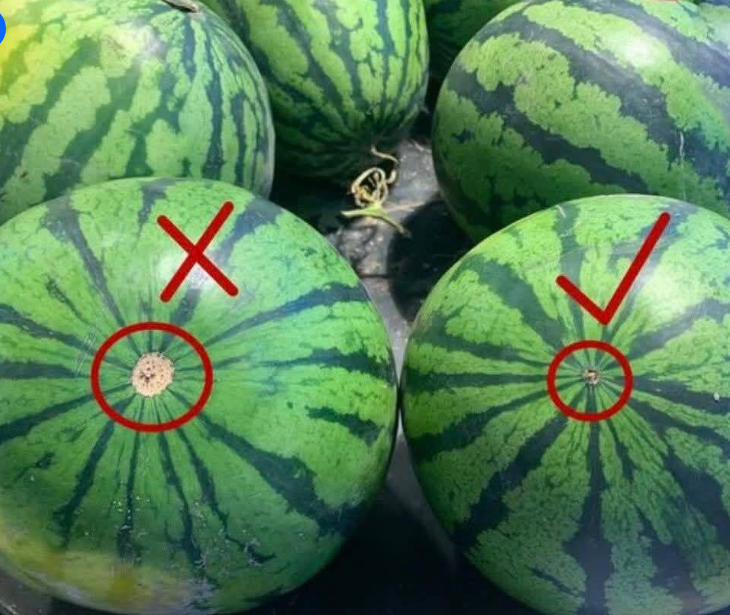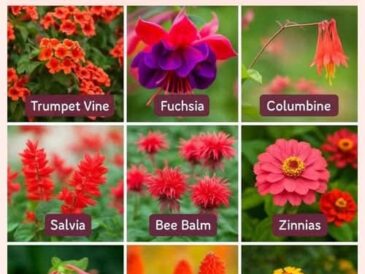Watermelon is the quintessential summer fruit. Picture yourself slicing it into large wedges after a day at the beach, savoring chilled cubes at a summer party, or blending it into a refreshing vitamin-packed smoothie. But how many times have you been disappointed by a bland, underripe, or mushy watermelon? The choice can quickly become overwhelming. What if you could spot the perfect watermelon at a glance, without even pulling out your knife? It’s entirely possible — as long as you know a few key signs that most people overlook.
Here’s your comprehensive guide to never making a bad watermelon purchase again. These tested and trusted tips come straight from growers and experts alike, combining practical experience with scientific insights.
1. Understanding Watermelon: A Demanding Fruit
A fruit rich in flavor… but tricky to choose
Watermelon (Citrullus lanatus) belongs to the cucurbit family and requires plenty of warmth, water, and sunshine. It grows quickly, but its ripening phase is crucial. Picked too early, the watermelon lacks sweetness; picked too late, the flesh becomes grainy and mealy.
Unlike bananas or pears, watermelon does not continue to ripen after being harvested. This means that the moment of picking completely determines the final quality of the fruit. That’s why selecting the right watermelon at the market is so important.
2. The Ground Spot: Your Number One Visual Clue
What is the ground spot?
It’s the lighter-colored patch on the watermelon’s surface where the fruit rested on the soil during growth.
How to interpret it?
- Creamy yellow to deep orange-yellow: a very good sign — the watermelon matured fully on the vine.
- Pale white or greenish: indicates the fruit was harvested too early and is likely to be bland.
Pro tip: The larger and darker the ground spot, the longer the watermelon stayed on the ground — which usually means more time to develop sugars and flavor.
3. The Rind: Dull or Shiny?
The watermelon’s skin reveals a lot about its ripeness:
- A matte, slightly rough rind usually indicates a ripe fruit.
- A smooth, shiny rind often points to an underripe watermelon.
Look for dark, well-defined stripes contrasting against the green background. A watermelon with a uniformly bright green rind tends to be immature.
4. Weight: Heavier Means Juicier
Pick up two watermelons of similar size. The heavier one usually contains more water, making its flesh denser, juicier, and sweeter.
A lightweight watermelon often has less water content and can be less tasty.
5. Shape: Round or Oval?
The shape can also influence flavor and texture:
- Round watermelons tend to be sweeter.
- Oval watermelons often have more flesh but can be more watery and less flavorful.
Aim for a watermelon that is symmetrical and uniform, without dents or bulges. This generally indicates consistent growth and good pollination.
6. The “Bong” Test: Listen to the Sound
Give the watermelon a gentle tap with your fingers:
- A deep, hollow sound is a good indicator of ripe, juicy flesh.
- A dull or muffled sound may mean the watermelon is overripe or has mushy spots.
- A high-pitched or sharp sound suggests immaturity.
This method requires some practice but becomes an invaluable quick test once mastered.
7. Marks and “Sugar Spots”
Some watermelons have brownish veins or scar-like marks on their rind:
- These are called sugar spots.
- They form when bees intensely pollinate the flowers.
- They often indicate a high sugar concentration inside.
Don’t avoid these markings — they’re a sign the watermelon is extra sweet!
8. The Stem: Green or Dry?
The stem, or peduncle, is a key maturity clue:
- A dry, brown stem means the fruit has naturally detached at peak ripeness.
- A green, fresh stem indicates premature picking.
A dry stem suggests the watermelon was allowed to ripen fully on the vine.
9. Watermelon Varieties: Not All Are Equal
There are many types of watermelons, each with unique characteristics:
- Crimson Sweet: very sweet, bright red flesh, black seeds.
- Sugar Baby: smaller, dark rind, very juicy.
- Yellow-flesh watermelons: less common, honey-like taste.
- Seedless varieties: convenient, but sometimes less flavorful.
Knowing the variety helps tailor your choice to your taste preferences.
Click page 2 for more




